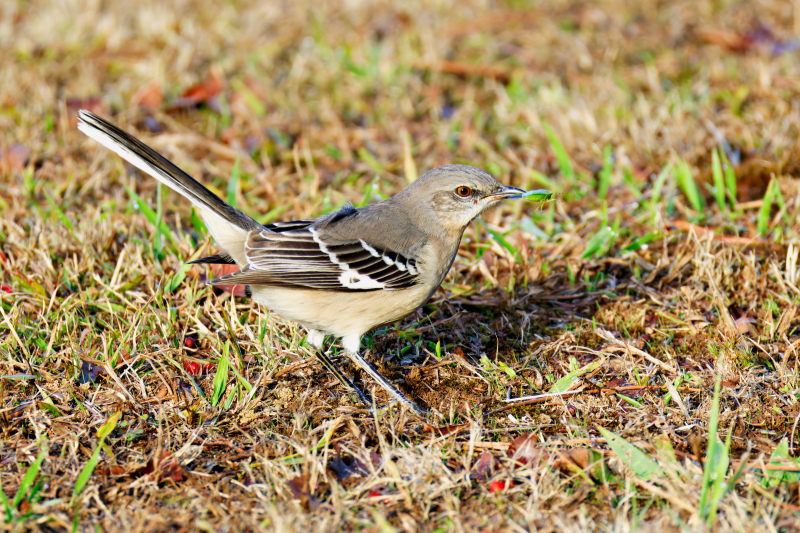On November 13th, I watched a Northern Mockingbird drop to the ground, grab a Green Stink Bug, and fly back up into my Washington Hawthorn tree. After the Mockingbird took the bug into the tree, I couldn’t tell if it ate the bug because the branches were in the way and it was facing away from me. Green Stink Bugs are known for their strong, nasty smell, definitely not a tasty snack for most animals. But there was the Mockingbird, eating it anyway.
Birds Adapting to a Smelly Pest Problem

It turns out that birds do eat these bugs. Recently, people have noticed that more birds, like bluebirds, are beginning to include stink bugs in their diets. Initially, birds seemed to steer clear of these smelly pests. However, some of them appear to be getting accustomed to the presence of stink bugs. The Mockingbird I observed wasn’t alone, it’s part of a larger trend.
The Green Stink Bug: A Tough Meal and a Farmer’s Headache
The Green Stink Bug, also known as Chinavia hilaris, poses a significant challenge for farmers in North America. It has a bright green, shield-shaped body and measures about 9/16 to 3/4 of an inch long. When threatened or crushed, it emits a foul odor from glands on its back. Farmers and gardeners really dislike them because they feed on growing fruits and seeds, leading to damage that affects both the quantity and quality of crops.
Birds consuming stink bugs is a positive development. Stink bugs, including their invasive relative, the brown marmorated stink bug, have created numerous problems for farms. Birds serve as natural pest controllers, and if they begin to eat more stink bugs, it could help alleviate some of these issues. Not all birds seem to be interested in these smelly bugs, but some are clearly adapting.
Nature’s Balance at Work
This shift is encouraging. Nature has its own way of restoring balance, and at this moment, some of our birds are starting to assist in tackling this pest problem, one stink bug at a time.

Hmm the Mockingbird is a beautiful bird. Wish we had some in my area to watch. I thank you for the photo and information about them.